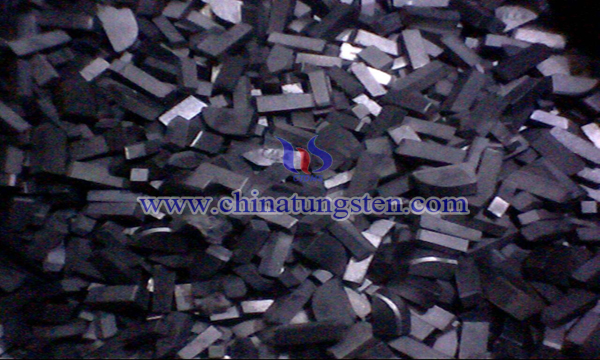Tungsten Recycle from Molybdenum Slag
- Details
- Category: Tungsten Information
- Published on Wednesday, 21 March 2018 16:17
In addition to molybdenum slag, it refers to the general term of precipitates mainly composed of thiomolybdate after adding molybdenum removal agent to the analytical peak solution during the production of ammonium paratungstate. Because the characteristics of tungsten and molybdenum are similar, in addition to the molybdenum process, a small amount of tungsten is often brought into the removal of molybdenum slag.

In the prior art, the commonly used method is to pump the molybdenum-removing slag into a filter press for pressure filtration and wash the slag in the filter press with fresh water. In this method, the residual tungsten trioxide from the molybdenum residue is sometimes as high as 30%, resulting in a decrease in the recovery rate of tungsten in the ammonium paratungstate production process, the filtration effect is not good, and the cost is increased.
A new scheme has been proposed by some scholars, which are briefly described as follows:
1. The fragmentation degree of molybdenum slag is broken to a block size of not more than 10mm, and the mass of wet molybdenum removal slag is not more than 150mm×100mm.
2. The molybdenum-containing slag is poured into a slurrying drum containing hot deionized water to adjust the slurry. The ratio of hot deionized water and molybdenum slag is 1:1 to 5:1. The hot deionized water is 30℃~50℃, and the stirring and mixing time is 0.5-2 hours.
3. After the molybdenum slag is homogenized, it is pumped into the washing tank for washing.
4. In the washing tank from the bottom through the steam heated to 60 ℃ 85 ℃, heat and stir 2 to 5 hours,
5.In the filtration and assay steps, the slurry is filtered through a filter press to obtain a pressure filtrate and a pressure filtration residue, and the content of tungsten trioxide in the chemical filtration filtrate and the pressure filtration residue is separately determined.
6.When the press filter residue contains >5% by mass of tungsten trioxide, the filter residue is reintroduced into the washing step and the circulation operation is performed; the press residue contains <5% by mass of tungsten trioxide, and the press residue is charged into the residue reservoir. The pressure filtrate containing tungsten oxide >5g/L is directly introduced into the APT crystallizer, and the pressure filtrate containing tungsten trioxide <5g/L is used for the next washing of the molybdenum-removal slag; or the pressure filtrate is returned to the previous process for batching.
Through adjustment, the ammonium tungstate solution with low content of impurities can be obtained from the removal of molybdenum slag, which can be used directly as the raw material for the production of ammonium para tungstate. This not only optimizes the production process of ammonium para tungstate, but also solves the difficult problem of removing molybdenum slag with high tungsten, but also improves the recovery rate of tungsten and reduces the cost.
- Tungsten Manufacturer & Supplier, Chinatungsten Online: www.chinatungsten.com
- Tungsten News & Prices of China Tungsten Industry Association: www.ctia.com.cn
- Molybdenum News & Price: news.molybdenum.com.cn
- Tel.: 86 592 5129696; Fax: 86 592 5129797; Email: sales@chinatungsten.com



 sales@chinatungsten.com
sales@chinatungsten.com